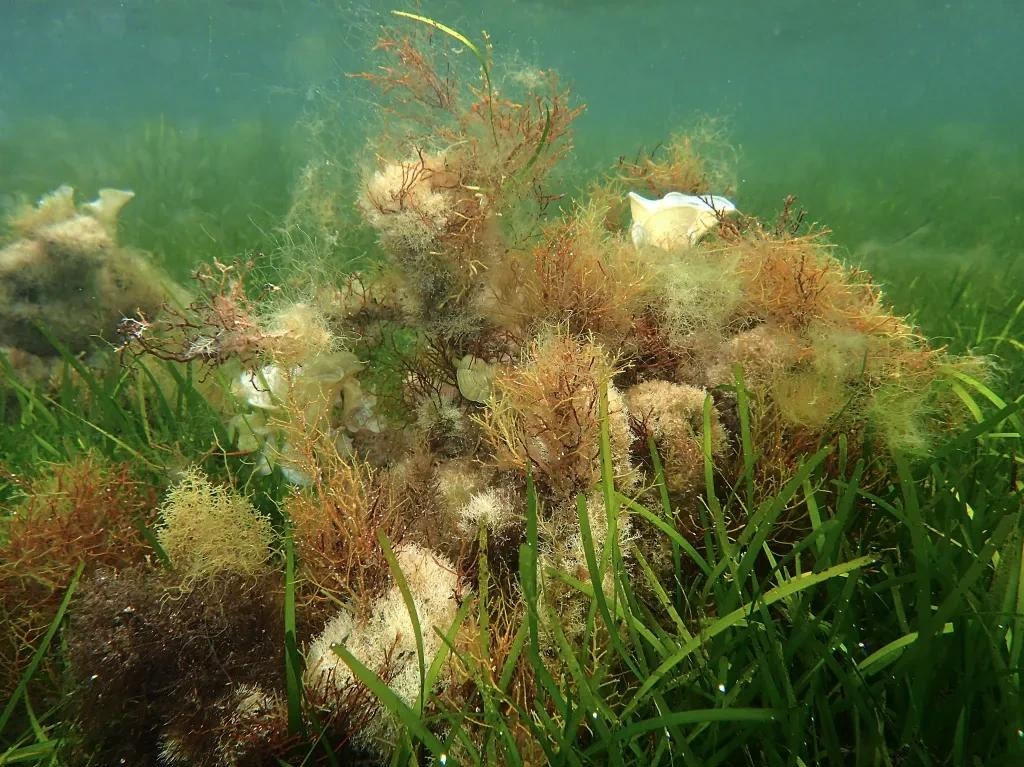Researchers reveal that attempts to restore the basic blocks of marine ecosystems are paying off, with macroalgae that supply food and shelter for other species coming back after a decade of growth in a Mediterranean Sea underwater seaweed forest.

Image Credit: Enric Ballesteros.
Anthropogenic activity has destroyed ecosystems and threatened biodiversity all across the planet, yet ecosystem restoration provides hope for the future. Scientists examining the repair of underwater seaweed forests, which give food and shelter to other species, discovered that 10 years of restoration efforts helped a damaged forest regenerate to richness and strength comparable to forests that had never been disturbed.
Macroalgal forests are found along over one-third of the world’s coastlines and underpin entire ecosystems. In 2011, a restoration action took place in the Bay of Maó, Menorca, where a macroalga species was reintroduced in the area where it used to thrive. After 10 years, we found that the associated algal species returned to the habitat, and with them, the ecosystem functions they provide.
Dr. Emma Cebrian, Study Corresponding Author, Centre d’Estudis Avançats de Blanes
The research was published in Frontiers in Marine Science.
Under the Sea
Cebrian and her colleagues investigated the functional recovery of seaweed forests using a trait-based approach: the link between restoration efforts and the forest functioning as it did before it was destroyed. The researchers studied five sites of Gongolaria barbata, one of the “canopy-forming” species vital to the survival of seaweed forests, to learn how the restoration of these species can help to revive the ecosystem.
Among all seaweeds, canopy-forming macroalgae provide structure to the ecosystem similar to trees in a terrestrial forest. They influence the local environment by altering, for example, the light and water flow. These modifications in the environment create ecological niches that other species can profit from.
Cristina Galobart, Study First Author, Centre d’Estudis Avançats de Blanes
Restoration efforts are typically evaluated on short timescales, particularly in marine ecosystems where these programs are less established. Projects that restore slowly maturing species, on the other hand, require longer timeframes for evaluation. Even while comprehending how vegetation structure and species diversity are restored, uncertainties about how an ecosystem returns to function remain.
To evaluate the function, quantifiable qualities in the target species must be studied to capture the health of the ecosystem. The researchers selected to look at a set of 14 characteristics, such as specimen size and whether they were from a longer-living or slower-growing species. The existence of organisms that require a longer time to mature or grow larger can imply a healthier, more capable ecosystem.
The researchers analyzed one actively restored locality where restoration efforts had been ongoing for 10 years, a nearby locality where restored macroalgae had spread beyond the initial restoration area, a neighboring locality that had not been restored, and two reference localities that had not been disturbed.
They took samples from each of these places for identification and analysis before drying and weighing them to determine the abundance of each species present.
Growing Strong
Researchers discovered that the restored locality contained a greater diversity of species than the undisturbed locality and the area where restoration efforts had spilled over, with a similar species composition to the reference samples. The restored area was even more functionally rich than one of the reference forests; however, it did not contain all of the species that the scientists had anticipated.
The species that comprise regenerated ecosystems may differ from the originals while still supporting local biodiversity. The regenerated area exhibited increased structural complexity and species with longer lifespans, indicating long-term recovery and increasing the potential shelter provided by the forest for other organisms. The increased diversity may also have long-term benefits: a more diversified seaweed forest may be better able to adjust to environmental challenges.
We demonstrated that a single restoration action, plus the removal of the cause of degradation, can lead to the recovery of not only a single species but also the associated ecosystem functions. Adding information from other restoration initiatives will help to completely understand how functionality is recovered in different habitats, species, or environmental conditions.
Dr. Emma Cebrian, Study Corresponding Author, Centre d’Estudis Avançats de Blanes
Journal Reference:
Galobart, C., et al. (2023). Addressing marine restoration success: evidence of species and functional diversity recovery in a ten-year restored macroalgal forest. Frontiers in Marine Science. doi.org/10.3389/fmars.2023.1176655.